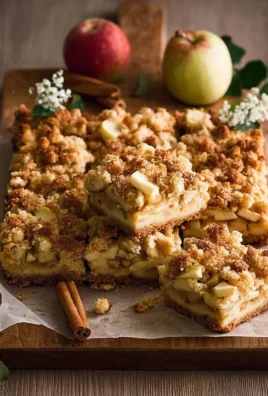
Classic tiramisu is one of the most celebrated desserts in the world, renowned for its delicate balance of flavors and textures. With roots deeply embedded in Italian culinary tradition, tiramisu is a testament to the art of simplicity. This no-bake dessert layers light and airy ladyfingers soaked in robust coffee with a luscious mascarpone cream, all dusted with a generous sprinkle of cocoa powder. The result is a dessert that is rich yet not overpowering, sweet but not cloying.
Tiramisu’s charm lies in its versatility—it can be served as an elegant conclusion to a dinner party or as a comforting treat for a cozy evening at home. Whether you’re a seasoned chef or a baking novice, mastering the art of tiramisu is a rewarding culinary journey that showcases the beauty of Italian tradition.
Overview of Tiramisu
Tiramisu, which translates to “pick-me-up” in Italian, is a dessert designed to invigorate with its blend of coffee and cocoa. At its core, the dessert features layers of savoiardi (ladyfinger biscuits), mascarpone cheese, eggs, sugar, and coffee. While the classic version remains the gold standard, tiramisu has been adapted in countless ways to suit regional tastes and dietary preferences.
Variations and Adaptations
- Alcohol-Free Tiramisu: Omits liqueur for a family-friendly option.
- Chocolate Lover’s Tiramisu: Incorporates layers of melted chocolate or chocolate shavings.
- Fruit-Infused Tiramisu: Features fresh fruits like berries or mango for a refreshing twist.
- Vegan Tiramisu: Uses plant-based ingredients, such as coconut cream and non-dairy mascarpone, to recreate the dish.
- Gluten-Free Tiramisu: Substitutes traditional ladyfingers with gluten-free biscuits.
These variations showcase tiramisu’s adaptability, making it a dessert that appeals to diverse palates and dietary needs.
Brief History and Cultural Significance
The origins of tiramisu are the subject of much debate. Several Italian regions claim to have invented this iconic dessert, with the strongest contenders being Veneto and Friuli-Venezia Giulia. While the exact timeline remains unclear, most historians agree that tiramisu emerged in the mid-20th century and quickly gained popularity across Italy before spreading worldwide.
Historical Milestones
- Veneto: Some accounts attribute tiramisu’s creation to a restaurant in Treviso in the 1960s. It was originally conceived as an energizing dessert for weary patrons.
- Friuli-Venezia Giulia: Another version credits the dish to a chef in the region, who developed it using locally available ingredients.
Cultural Impact
Tiramisu has transcended its origins to become a symbol of Italian cuisine. It is featured on the menus of countless Italian restaurants, both in Italy and abroad. In popular culture, tiramisu has been celebrated in films, TV shows, and literature, further cementing its status as a dessert icon.
Preparation Phase & Tools to Use
Creating classic tiramisu requires precision and care, but the process is straightforward when broken down into manageable steps. Using the right tools and techniques ensures a dessert that is both visually stunning and irresistibly delicious.
Time and Yield
Tiramisu can be assembled in under an hour, with additional chilling time required to allow the flavors to meld. While the dish is traditionally prepared in a rectangular baking dish, individual servings can be created in glasses or ramekins for a more modern presentation.
Essential Tools and Equipment
- Mixing Bowls: For whipping the mascarpone mixture and beating egg whites or cream.
- Electric Mixer or Whisk: To achieve the desired consistency for the mascarpone and whipped cream layers.
- Baking Dish: A rectangular or square dish is ideal for layering the dessert.
- Spatula: For spreading the mascarpone mixture evenly.
- Coffee Brewer or Espresso Maker: To prepare the strong coffee needed for soaking the ladyfingers.
- Fine Sieve: To dust the top layer with cocoa powder.
Importance of Each Tool
The right tools simplify the process and enhance the final product. For example, an electric mixer saves time and effort while achieving the perfect lightness in the mascarpone mixture. A fine sieve ensures even cocoa powder distribution for a polished presentation.
Preparation Tips
- Use Fresh Ingredients: High-quality mascarpone, fresh eggs, and strong coffee are essential for authentic flavor.
- Cool the Coffee: Allow the coffee to cool completely before soaking the ladyfingers to prevent them from becoming too soggy.
- Handle Ladyfingers Gently: Dip them quickly into the coffee to avoid over-soaking, which can lead to a mushy texture.
- Chill for Optimal Flavor: Let the assembled tiramisu chill in the refrigerator for at least 4-6 hours, or overnight, to allow the flavors to meld beautifully.
Ingredients List (with Measurements)
Core Ingredients
- Savoiardi (Ladyfingers): 24-30 pieces, depending on the size of your dish.
- Mascarpone Cheese: 500 grams (about 2 cups), softened.
- Eggs: 4 large eggs, separated into yolks and whites.
- Granulated Sugar: 100 grams (½ cup).
- Strong Coffee: 1½ cups, cooled to room temperature.
- Cocoa Powder: 2-3 tablespoons, for dusting.
Optional Additions
- Liqueur: 2-3 tablespoons of Marsala wine, rum, or coffee liqueur for added depth.
- Vanilla Extract: 1 teaspoon, for a hint of sweetness.
- Chocolate Garnish: Shaved dark chocolate or chocolate curls for decoration.
Step-by-Step Instructions
Step 1: Prepare the Coffee Mixture
- Brew strong coffee or espresso and let it cool to room temperature.
- Stir in liqueur if desired, then set aside.
Step 2: Make the Mascarpone Cream
- In a mixing bowl, whisk the egg yolks and sugar until the mixture is pale and creamy.
- Add the mascarpone cheese and gently fold until smooth and well combined.
Step 3: Whip the Egg Whites
- In a separate bowl, beat the egg whites with an electric mixer until stiff peaks form.
- Fold the beaten egg whites into the mascarpone mixture in three batches, being careful not to deflate the mixture.
Step 4: Assemble the Tiramisu
- Quickly dip each ladyfinger into the coffee mixture, ensuring they are moist but not soaked.
- Arrange a single layer of soaked ladyfingers at the bottom of your dish.
- Spread half of the mascarpone mixture evenly over the ladyfingers.
- Repeat with another layer of soaked ladyfingers, followed by the remaining mascarpone mixture.
Step 5: Finish and Chill
- Dust the top of the tiramisu generously with cocoa powder using a fine sieve.
- Cover the dish with plastic wrap and refrigerate for at least 4-6 hours, or overnight.
Serving Suggestions
Tiramisu is a dessert that can be tailored to any occasion. Whether it’s a casual family gathering, an elegant dinner party, or a romantic evening, this versatile dish always impresses. Below are some creative serving ideas and presentation techniques to elevate your classic tiramisu experience:
Presentation Ideas
- Traditional Style
Serve tiramisu in a large, rectangular dish and cut it into squares for a classic look. Use a spatula to neatly plate each slice, ensuring the layers remain intact. - Individual Portions
Assemble tiramisu in small glasses, ramekins, or jars for personalized servings. This approach not only looks elegant but also allows for easier portion control. - Layered Parfaits
Create tiramisu parfaits by layering crumbled ladyfingers, mascarpone cream, and cocoa powder in tall dessert glasses. Add a drizzle of melted chocolate or a sprinkle of grated coffee beans for an artistic touch. - Tiramisu Cake
Instead of a layered dessert, arrange the ingredients in a round springform pan to mimic the appearance of a cake. Dust the top with cocoa powder and decorate with chocolate curls or coffee beans. - Frozen Tiramisu
Turn your tiramisu into a semi-frozen treat by chilling it in the freezer for a few hours before serving. Let it soften slightly at room temperature before slicing. - Plated Elegance
Serve a slice of tiramisu on a dessert plate, garnished with a dusting of cocoa powder, fresh mint leaves, or a drizzle of coffee syrup for added visual appeal.
Nutritional Information & Health Benefits
While tiramisu is undeniably indulgent, it also contains ingredients that provide surprising health benefits when enjoyed in moderation. Below is a breakdown of its nutritional components and the potential advantages of key ingredients.
Nutritional Breakdown
- Mascarpone Cheese
- Rich in calcium, essential for strong bones and teeth.
- Contains fats that provide energy, though best enjoyed in moderation.
- Eggs
- A great source of high-quality protein and essential vitamins such as B12 and D.
- Egg yolks add creaminess, while egg whites contribute to a lighter texture.
- Coffee
- Packed with antioxidants that can protect cells from damage.
- Provides a natural energy boost and enhances focus.
- Cocoa Powder
- Contains flavonoids, which support heart health and improve circulation.
- Adds a rich, chocolatey flavor with minimal added calories.
Health Benefits
- Boosts Energy
The coffee in tiramisu acts as a natural stimulant, offering a quick pick-me-up after a meal. - Source of Antioxidants
Cocoa and coffee are both rich in antioxidants, which help combat free radicals and reduce inflammation. - Mood Enhancer
The combination of creamy mascarpone, sweet layers, and rich coffee creates a dessert that feels indulgent and uplifting, contributing to overall happiness. - Customization for Health
- Use low-fat mascarpone or Greek yogurt to reduce calorie content.
- Substitute sugar with natural sweeteners like honey or maple syrup for a healthier twist.
Common Mistakes to Avoid & How to Perfect Tiramisu
Crafting a perfect tiramisu requires attention to detail, but even small mistakes can impact the final result. Below are common pitfalls and expert tips for avoiding them:
Common Mistakes
- Over-Soaking the Ladyfingers
- Dipping ladyfingers in coffee for too long can make them soggy and lead to a watery tiramisu. A quick dip is sufficient to moisten the biscuits without oversaturating them.
- Using Warm Coffee
- Coffee that’s too hot can break down the ladyfingers and affect the mascarpone layer. Always allow the coffee to cool completely before using.
- Skipping the Chilling Step
- Proper chilling is essential for the layers to set and the flavors to meld. A tiramisu that’s served too soon may lack structure and flavor depth.
- Uneven Layers
- Failing to spread the mascarpone cream evenly can result in a lopsided dessert. Use a spatula to create smooth, uniform layers.
- Using Poor-Quality Ingredients
- Subpar mascarpone, weak coffee, or stale ladyfingers can detract from the dessert’s quality. Invest in high-quality, fresh ingredients for the best results.
How to Perfect the Recipe
- Master the Coffee Mixture
- Brew strong espresso for a robust coffee flavor. Add a splash of liqueur like Marsala or Amaretto for complexity.
- Achieve the Perfect Texture
- Beat egg whites or cream to stiff peaks for a light and airy mascarpone layer. Fold the ingredients gently to maintain volume.
- Balance Sweetness
- Adjust the sugar to your taste. Remember, the cocoa powder and coffee add bitterness, so a slightly sweet mascarpone layer creates balance.
- Use Fresh Cocoa Powder
- Dust the top layer generously with cocoa powder just before serving to ensure a fresh, rich flavor.
- Refrigerate Overnight
- For the best results, allow the tiramisu to chill for at least 6 hours, preferably overnight. This enhances the flavors and creates the perfect texture.




Leave a Comment